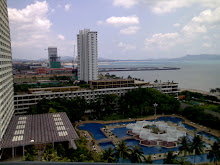The Paris Motor Show in 1867, must have an unforgettable spectacle. The main building was nearly two football fields in length, with a central pavilion, topped by a dome and surrounded by a garden. Over 50,000 exhibitors displayed in more than 100 buildings. Among the exhibitors were 400 piano manufacturers, all competing for the gold medals that the insurance market makes future 'plan their dominance of the world.
Enthusiasm for the four> Floor models displayed York Steinway & Sons New was overwhelming. Steinway has won two gold medals, endorsements and praise from European royal houses of Franz Liszt and other great pianists. The Steinway grand piano was so wildly popular that the magazine Harper's Weekly published a cartoon showing battle crowds to get to a Steinway piano. The cartoon caption read: "Sudden Mania pianist plays Steinway pianos are created in ParisShow. "
York Sun was the popularity of the Steinway grand piano in 1869, Matthew Fontaine Maury, then chairman of the Physics Department at Virginia Military Institute sent two of his daughters in New, VA buying a Steinway for their home Lexington. Matthew F. Maury was a former director of the U.S. Naval Observatory, and Commodore of the Confederate Navy. He received medals from European leaders for his achievements and honored with the nickname "The Pathfinderseas "for his pioneering work on ocean currents. Lexington Commodore Maury was down to pursue his academic. If the house Steinway got to be some interest, Commodore Maury wrote excitedly son-in-law say its" The piano is come - all safe - Elegant. All content with him, and makes Elie Talk Now "! Thank you. "
My introduction to Maury Steinway was almost twenty years ago when I received a call from Keith Gibson, renowned author and Executive Director ofMuseum programs for Virginia Military Institute. Col. Gibson porch is the piano Maury, who had been kept under for decades. The piano was used by the family Maury family until about 1912, when the Christian, has been sold. In 1991, the Rev. William Christian, whose mother had bought the piano, which provided the VMI tool. generous funding of Dr. J. Battle Haslam, a 1961 VMI grad, provided money for restoration. In my experience, recovery of consciousnessantique pianos, Gibson asked, Col. assess the possible restoration plan.
My first impression of the piano, was that it should be sprinkled with petrol and set alight. The rosewood veneer was peeling from, ivory was missing, was in many keys, there was termite damage to the lid and legs, the strings were rusty, they felt moth eaten, and the piano action was completely seized because of verdigris 'action pivot points. But I knew thatThis was a historically important instrument, which was a historically important man in possession.
Before accepting a restoration job, I first determine the customer expectations. Col. Gibson has his expectations clear from the beginning: He is not a cosmetic clean-up that would be suitable only for display, he wanted to play this instrument. My logic was to say to me: "Run Away", but my instinct told me that this was my plan again. When I have anotherbe in charge of this restoration. This was an opportunity for me to pay homage to history. This instrument deserves thoughtful restoration and qualified, and I mean that only.
Restoring an antique piano is like restoring an old car and the restoration of antique furniture. A piano is a machine with thousands of pieces of wooden furniture. The warning that Antiques Roadshow "Finishing bad value" does not apply to pianos. The challenge with aantique piano is to get its historical integrity, while the insurance that they play music. admonition of Hippocrates' "first, do no harm" should stay in the mind of the restorer in the selection of materials and techniques. In consultation with Colonel Gibson, a restructuring plan was developed.
The restoration took more than a year. The piano has been completely dismantled, thousands of pieces were numbered and labeled. unusual configurations were photographed. The strings were sent to aString-maker for duplication. Action felts and fabrics have been carefully removed and replaced. The case was repaired veneer, and gold-plated brass parts were new cases. A new block connections tuning has been installed, and repaired the bridges and soundboard. The case was finished, and then the piano was once again lined up, reassembled the action, and the piano is regulated and coordinated.
The resulting instrument sound surprised everyone. Square pianos were typically irregular overwhelming toneweak bass and treble tones. The Steinway Maury was remarkable in tone for a square piano. Not surprisingly, Steinway has won awards including the 1867 World Exhibition in Paris.
Due to renovations at the museum, the plan was put into storage at VMI in 1995 until its official opening in June. Dr. Haslam was the first to play the piano, the implementation of the doxology and the Navy Hymn, decisions that would fall Commodore Maury. According to Dr. Haslam, song"Ashokan Farewell", the theme from the PBS series The Civil War, was performed by Ginny Hutchinson, great-granddaughter of Commodore Maury.
Nearly twenty years after the initial restoration, the Maury Steinway is still exhibited at the V.M.I. Museum in Lexington. It is occasionally played, and the piano's care is under the watchful eye of Col. Gibson. Once again, Commodore Maury's piano "talks". I am glad I played a part in restoring the pianos voice.
My Links : Sea Container

No comments:
Post a Comment